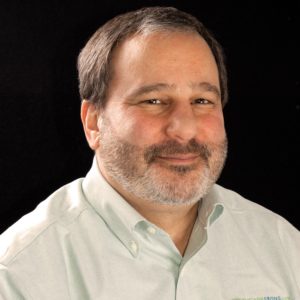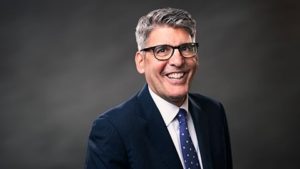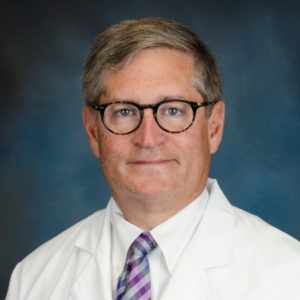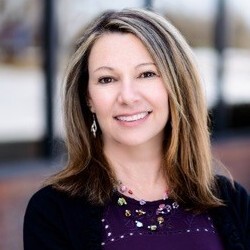View From the Trenches: Interview with Dr. Leslie Eber
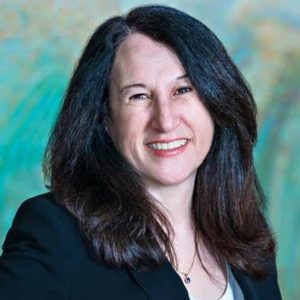
Leslie Beth Eber, MD, CMD
Leslie Beth Eber, MD, CMD, is the medical director of the Orchard Park Health Care Center in Greenwood Village, Colorado. In addition to her medical directorship, she maintains her practice as a geriatric specialist at Rocky Mountain Senior Care, where she focuses on the “whole person.”
Dr. Eber was awarded the prestigious 2021 Medical Director of the Year award by AMDA – The Society for Post-Acute and Long-Term Care Medicine. Among her many other accomplishments, Dr. Eber is the immediate past president of the Colorado Medical Directors Association – the Colorado Society for Post-Acute and Long-Term Care Medicine.
Dr. Eber is widely recognized as a leader in the area of caring for seniors and is respected for her innovative approaches. She took time from her busy schedule for the interview below.
AH: Dr. Eber, in 2021, you were voted Medical Director of the Year by AMDA the Society for Post-Acute and Long-Term Care Medicine. That is a very prestigious honor that you no doubt deserve. What was it like receiving such an extraordinary honor?
LE: I was very honored and humbled. I felt that during 2021, that award should go to all the medical directors and providers who worked so tirelessly. I know so many medical directors and providers that were having conversations with resident families and staff well into the evening. As a community we really came together for patient and resident safety, and I felt that this award should go to us all.
AH: In addition to being board certified in internal medicine, you have earned the designation of a Certified Medical Director or “CMD.” What is the process by which physicians can earn the CMD designation?
LE: It was actually a dream of mine to become a CMD. Its relevance was remarkable, whether you are a physician who is just starting out or an experienced medical director who has practiced for years. I was so impressed with the education. Becoming a CMD exceeded my expectations. I learned skills and tools that I use every day in management and leadership. Additionally, I discovered components of medical directorship that I could really expand upon and serve my facility and residents better. It was on my bucket list and the only regret I have is that I did not do it sooner. It really has shaped my medical director expertise and leadership ability.
AH: Why is it important for medical directors and attending physicians in post-acute and long-term care to achieve the CMD designation?
LE: Becoming a CMD elevates our ability to be an effective and relevant leader in our facility and to provide up-to-date and valuable knowledge. There are important aspects of care that we are not taught about in medical school. A medical director who has earned the CMD designation can change the entire paradigm in a facility. Becoming a CMD helps physicians to be effective advocates for both the staff and residents.
AH: As you know, California recently adopted legislation that will require medical directors of skilled nursing facilities to demonstrate their competency by earing the CMD designation. Is this something that other state legislatures should consider? And why?
LE: Absolutely! It is important to ensure that every facility has effective leadership from the medical director and the CMD process helps medical directors to elevate the concerns and needs of residents and staff. I feel that anything that can increase the quality of care would be beneficial and I fully support Colorado adopting legislation like what California has passed.
AH: You are the Medical Director at Orchard Park Health Care Center in Greenwood Village, Colorado, which has been recognized as a 5 Star facility by Centers for Medicare and Medicaid Services (“CMS”). Can you tell our readers a little bit about what being a medical director entails?
LE: Well, I am responsible for all the medical care that happens at Orchard Park Health Care Center. I am involved with all policies and procedures and not just the development of those polices but their implementation. It’s not enough to just have policies and procedures. It is important to go to the next step and ensure the care expectations are being achieved. I am also involved with medication reviews.
Our psychotropic pharmacy committee, which I co- chair, meets monthly to review psychotropic medications and ensure they are being used for the best possible care. We also review the use of opioids. I am also the co-chair of our antibiotic stewardship program, which is important to ensure antibiotics are being used appropriately and to prevent further antibiotic resistance. I also meet with residents and their families and chair our quality assurance and performance improvement committee, which meets monthly.
Another part of my responsibilities involves educating and providing support for the staff. It is important that all members of the healthcare team know that their voices are being heard and I strive to see that their concerns are recognized and addressed.
AH: You are the immediate past President of CMDA, the Colorado Society for Post-Acute and Long-Term Care Medicine. Can you describe its mission and some of its activities?
LE: CMDA is very dear to my heart. Part of its mission is to provide education and information to all providers in the post-acute and long-term care arena. Membership in CMDA helps providers to elevate the quality of care they deliver. We provide timely and state of the art education on medical diseases, standards of care and also help with clinical problem-solving. Additionally, we have supported one another during the fast-moving COVID-19 pandemic. We focused on how we could best help one another, our patients and their families as well as staff. Being a member and past president of the CMDA was a life-changer for me.
AH: In an article you recently coauthored published in JAMDA, “Building Trust in Post-Acute and Long-Term Care: Strategies for Sustainable Change,” you write about “building trust.” What are some of the salient aspects of building trust in post-acute and long-term care, and why is that important?
LE: We spent about nine months researching the topic because we wanted to get it right. It seems like this is a “turning point” moment for PALTC and we want to make an impact to elevate Post-Acute and Long-Term Care Medicine. Building Trust and having meaningful engagement with the entire interdisciplinary team not only elevates the care delivered to our residents but also creates a sense of value and worth for our staff. It is a win-win situation. When you’re not inviting every member of the healthcare team to the table, you’re missing a valuable resource and possible solutions.
So, one of our goals was to outline a process where everyone felt valued and relevant. I and my fellow authors found that solutions often come from having everyone share their input and know that they are being recognized. Essentially, we describe how trust has an impact on patient care as well as improving the morale of all team members and fostering a collaborative approach to caring for our residents.
AH: In the article mentioned above you refer to your involvement with the “Healing Together” campaign of AMDA. Can you briefly describe that program and how it affects both residents and staff?
LE: The Healing Together campaign was created by AMDA to provide a space where providers can come together with staff and determine how best to share information with one another with an eye on healing together. It was increasingly important to AMDA to create spaces where we can share our respective experiences and deal with trauma, especially after the ravages of the COVID-19 pandemic.
On a personal note, I learned something from every CNA who shared their story on the webinar. I use their ideas and input in my facilities and feel so enriched by their expertise. One of the goals for the Healing Together campaign was to create strategies and methods where we could move forward in a positive way.
AH: In the article we’ve been discussing, you explained how “Town Hall meetings” had a positive impact on communication and improving messaging in the long-term care setting. Can you describe how that mechanism works?
LE: The Town Hall meetings is one of my favorite things on earth. A most wonderful thing happened during these meetings. Not only did residents’ family members participate, but staff and residents also became involved and joined the conversation. This was a great way to share updated information and come together as a community.
We also shared a recording of the Town Hall meetings and people shared the information with other members of the community. It became an effective tool in messaging, providing relevant information in a timely and constructive manner and giving an update on the Orchard Park community and where we were in the pandemic. We also were able to set expectations as recommendations changed, so everyone was on the same page. It was an act of full community inclusion.
AH: COVID-19 has had a devastating effect especially in the long-term care arena. The last two years have put an enormous strain on our health care system and health care workers across the spectrum, from medical directors to nurses to aides, housekeepers and all other members of the health care team. What were some of your biggest challenges as a medical director in long term care and how did you deal with those challenges? For example, was it challenging to obtain sufficient quantities of PPE?
LE: Perhaps the biggest challenge we faced was fear. As COVID-19 rapidly spread with its devastating impact, people were terrified. Initially, there was no vaccine which further added to the stress of managing the epidemic. The way I addressed that challenge was to be present. I came to Orchard Park multiple times a week and I realized that being a leader that was “in it with everyone” was important.
Orchard Park was incredibly diligent. We did struggle at times, like everyone else but we came together as a community and relied on one another as we strived to give our residents the best possible quality of care and meet the needs of the patients and their families, especially when they had limited or restricted visitation.
Another challenge was morale. It was a big lift with more tasks on the “to do” list with infection control and less staff to do them. We cross-trained many staff and leadership really pitched in. We really tried to make sure people felt supported and valued. We talked about the important work that we were doing to support and care for the most vulnerable in our society. We also became the residents’ family when their loved ones could not visit. These initiatives were the best way we could honor our residents and make a difference. Now, our biggest challenge is pandemic fatigue. We are all tired and now it is important that we are seen for the work we continue to do for residents.
AH: Was it particularly difficult for residents who suffer from dementia to cope with the restrictions imposed by COVID-19, such as limited movement within a facility, changes in their immediate environment and the severe impact on visitation? And how did you deal with those challenges?
LE: One of the most difficult challenges of the pandemic was helping residents with dementia navigate their way through all the changes that they had to endure. It was very scary for residents in general but even more so for those residents who may have some form of cognitive impairment. We were especially tuned-in to the needs of those resident who struggle with dementia and tried to ensure they felt supported and connected.
AH: You chair the Colorado Dementia Partnership. Can you tell our readers something about that? For example, what are some of the valuable resources it provides?
LE: The Dementia Partnership worked hard to provide tools to ease the fear that many people with dementia experience. When staff is wearing a mask, a resident can’t see if the caregiver is smiling, and this led to residents feeling anxious and unsure. I worked with Orchard Park staff to meet the unique needs of people with dementia. I would encourage staff to hold the hand of a resident and gently say something like, “I am so happy to see you.”
Additionally, the Colorado Dementia Partnership provides a host of web-based tools that can help caregivers provide the best level of care for people with dementia. We realized that a major priority during the pandemic is to support the staff, which is one of the best ways to elevate the care that residents with dementia receive. We have created cards that fit in your phone, ID badge or pocket that can help staff with strategies to try when residents with dementia our struggling.
AH: While we’re on the subject of dementia, do you feel that the off-label use of antipsychotics remains an issue in long-term care?
LE: During the pandemic, the post-acute and long-term care community did see an uptick in the use of anti-psychotic medications. Residents had an increased level of fear and apprehension due to all the rapid changes and restrictions that were necessary to safeguard them. At this point, the medical community is having the important conversation about how we can appropriately reduce anti-psychotic usage and only use when it is clinically appropriate.
AH: Have there been significant and demonstrable improvements in the way residents with dementia, whether its Alzheimer’s disease, Lewy body dementia (LBD), vascular dementia (VaD), or frontotemporal dementia (FTD) are cared for?
LE: I really think there has been a huge leap forward in the management of dementia. For example, I’d like to give a shout-out to the Greenhouse Project. They have helped shape the narrative. Finding joy and satisfaction in the moment for residents struggling with dementia can help bring meaning and purpose to their life. Giving residents choices and as much autonomy as possible also sets the framework for person centered care.
Our dementia care has evolved, and we have made significant advances in how we approach care for patients struggling with dementia. We also know more about the role of education for all caregivers and how that helps promote the best quality of life for someone struggling with dementia.
AH: What lessons do you think we have learned from the past two years in terms of how we dealt with the covid-19 pandemic?
LE: I think we have learned so much over the past 2 years. The pandemic revealed issues in post-acute and long-term care that have been there for decades. We must pay staff a fair wage and honor the important work they do every day. We must set the bar for staff expertise and respect that matches the emotional effort and labor we expect them to invest in the residents they care for each day. We also need to invest in the physical structure of our facilities and consider each patient’s need for his/her own room.
This, of course, adds a layer of infectious control safety in addition to the individual needs for sleep and space. Additionally, the pandemic shined a bright light on the need for sufficient and adequate staffing across all levels of caregivers.
One of the positive initiatives that resulted from the pandemic is an increased collaboration between the Colorado post-acute and long-term care community and the Colorado Department of Public Health & Environment (“CDPHE”). The governor formed the Colorado COVID-19 Residential Strike Team, which has been dedicated to support residents, facilities and staff while also mitigating the spread of COVID-19 in our space. The Residential Strike Team has been proactive and collaborative in eliciting support and feedback from providers on the ground, providing care.
In many communities, we came together and became our own family, leaning on each other and supporting each other. Seeing this reaction has motivated us to see if we can spread these ideals and strategies to create a stronger and improved version of post-acute and long-term care.
AH: Recently, Johns Hopkins published a study, “Literature Review and Meta-Analysis of the Effect of Lockdowns on COVID-19 Mortality.” Based on a meta-analysis, researchers found that lockdowns in Europe and the U.S. reduced COVID-19 deaths by only 0.2% and had a “devasting effect” on economies and social issues.
I’d like to get your response to the researchers’ conclusions that “We find no evidence that lockdowns, school closures, and limiting gatherings have had a noticeable effect on COVID-19 mortality.” The study further concluded that lockdowns are “are ill-founded and should be rejected as a pandemic policy instrument.”
LE: I agree that the isolation caused by lockdowns was harmful, especially to very fragile residents and those struggling with dementia. We will likely see the ramifications from this action in years to come. While the lockdowns were obviously not done with malice, they nevertheless had a profound effect on both residents and families.
AH: CMS directs nursing facilities that visitors must be able to visit residents regardless of the visitor’s vaccination status. Is this a good thing?
LE: It is very difficult to walk that fine line. On one hand, it is important that residents have access to loved ones. And, on the other hand, our priority is to promote resident safety. We absolutely need visitors to work with us to keep each other safe. This is another area where providing education can go a long way to resolving thorny issues.
When visitors join us in helping to protect residents by getting vaccinated and boosted, not visiting when they have symptoms, and testing before they visit, when possible, that can keep all of our residents and staff safe. We have elevated family and visitor communication and collaboration to promote this priority.
AH: Recently, the Supreme Court decided in a 5-4 decision to allow the CMS-imposed vaccine mandate in health care facilities that participate in Medicare. Is this a good thing and why?
LE: This is a good thing! Our job and priority are to care for our residents and keep them safe. During the pandemic there is no better way to achieve this goal than to be vaccinated and boosted. But this should not eliminate efforts to promote education, answer questions and ensure that staff concerns are addressed. Even with a mandate, we can activate people’s agency, the ability to act with purpose and make a difference in people’s lives.
AH: There has been much reporting about the staffing shortage in health care and especially in the post-acute and long-term care sectors. How extensive is the staffing shortage and what can be done to alleviate it?
LE: The staff shortage in post-acute and long-term care is dire and some facilities have actually closed due to the lack of staff. This results in residents losing their home and moving to a new and different facility. The impact is profound. The answer is multifaceted and includes addressing staff culture, resources, wages and support. The solutions need to be addressed at the federal, state and local level, so there is a lot of work to do. We can begin by supporting, valuing and honoring the work that the staff does and its impact on the residents we serve. This should be done at both the national and community level.
AH: How do you motivate your staff from physicians, physician extenders to nurses to nurse aides and all other members of the healthcare team?
LE: I believe strongly in building on the positive. Most people work in this field because they want to help people and make a difference. That is our common ground and then we all build on that goal together. My leadership style is to invest in both residents and staff. I ask how staff and residents are doing, what do they need and how can things be better. And then I listen. I use these ideas to promote improvement through our Quality Improvement Committee and through collaboration with our administrator and director of nursing.
Once people realize you listen and value their input, you respect them and the work they do, then the motivation and collaboration are easier next steps. It is all about personal relationships and investing in individuals. Building trusting authentic relationships is the pathway to elevating care for residents with the bonus of increasing job satisfaction.
AH: If there was one thing you could change about the post-acute and long-term care sectors, what would that be?
LE: I would create a paradigm where post-acute and long-term care staff were valued by the community and society both for the work they do and monetarily. Being respected for the work you do and getting a fair salary can make all the difference.
AH: I assume you haven’t cloned yourself so I’m sure our readers would like to know how you manage to so effectively balance your time between your clinical practice, your medical director role, your leadership roles at the state and national level as well as the podcasts and publishing that you do?
LE: I have a wonderful and supportive family and community. In Colorado we are so lucky to have colleagues in post-acute and long-term care medicine that are invested in each other. It has always been true, but we really felt it during the past two years. We leaned on each other and were there for each other when things were overwhelming. I feel I was able balance everything because I keep very good company.
Colleagues like Dr. Cari Levy, Dr. Sing Palat. Dr. Lea Watson and Dr. Christine LaRocca – as well as my boss, the owner of Rocky Mountain Senior Care, Dr. Elane Shirar – all made me stronger. We provided each other with the knowledge necessary to provide the care our residents needed.
AH: Elsewhere, it was noted that you out-run the Energizer Bunny, which I believe to be true. How do you find the energy to do all the things you do, wear multiple hats and accomplishing so much on so many levels?
LE: I am not sure I can be compared to the Energizer Bunny, but I am passionate about what I do and I love my work. I love the residents, the staff and the community. I find the work so meaningful and the chance to make a difference is a powerful motivator for me. I feel really lucky that I found a career and community that has given me the opportunity to improve the lives of people living in nursing homes.
AH: What advice, if any, would you give to health care workers, especially in the post-acute and long-term care arena?
LE: At this moment, know you are valued. You are not invisible, and your work and efforts are meaningful. They are the lifeline for people living in nursing homes and we are grateful for you and the residents you serve.
Note: The author sincerely thanks Dr. Eber for being such an incredible clinician, medical director and role model.
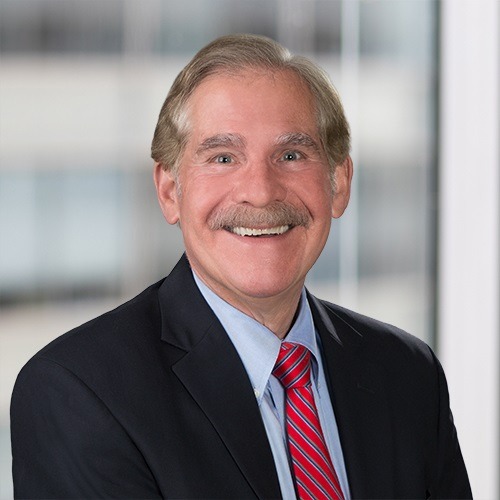
Alan C. Horowitz, Esq., is a partner at Arnall Golden Gregory LLP, where he focuses his legal practice on regulatory compliance for skilled nursing homes, hospices and home health agencies and manages cases where the Centers for Medicare and Medicaid Services (CMS) has imposed an enforcement action. He is a former assistant regional counsel Office of the General Counsel, U.S. Department of Health and Human Services. As counsel to CMS, he was involved with hundreds of enforcement actions and successfully handled appeals before administrative law judges, the HHS Departmental Appeal Board and in federal court. He also has clinical healthcare experience as a registered respiratory therapist and registered nurse. He can be reached at alan.horowitz@agg.com.
Related Articles
Topics: Activities , Alan C. Horowitz , Alzheimer's/Dementia , Clinical , Facility management , Featured Articles , Infection control , Leadership , Medicare/Medicaid , Resident Care






